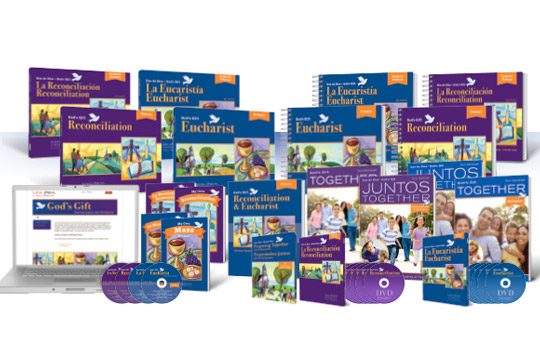
It is an established fact that language and culture go hand in hand. Language is a crucial part of identity. When a language becomes endangered, the culture associated with that language also becomes endangered. According to linguist Noam Chomsky, “Language embodies the world view of a culture and is unique to the culture that created it. It reflects values and concepts that are deemed to be the most important by a culture. A language describes the culture it comes from.”
For this reason, it is imperative that Catholic parents speak God’s language at home, especially when children are preparing for a sacrament.
So what do we mean by the phrase, “God’s language?”
God has a way of speaking to us that includes words but also includes signs and symbols and other unseen and unheard realities. For God’s words, we turn to Scripture. There we find God’s vocabulary, his “dialect” and his “accent.” It is important for parents to incorporate God’s vocabulary into family life, perhaps by displaying a favorite Scripture passage artfully rendered in a frame and placed on a wall in the family room. Reading Bible stories as a family is another way of teaching God’s language, since God’s language conveys values and morals.
But God also speaks in mysterious ways, through signs, symbols, and rituals, all of which invoke the story of God’s love for us and how that love—brought to us through Jesus Christ—rescues, restores, and reassures us. In the wonderful hymn, “Blessed Assurance,” we sing the refrain, “This is my story!” The signs, symbols, and rituals of our Catholic sacramental life tell our story so that we can make it our own. Parents can speak God’s language at home by developing family rituals such as praying together at meals and at bedtime, tracing the Sign of the Cross on children as they leave for school, and, of course, making Sunday a holy day that includes Sunday Mass. Likewise, parents can teach God’s language at home through the display of sacred objects such as a crucifix, a Bible, or a bowl of holy water, to name just a few.
I’ve always loved how the God’s Gift First Reconciliation and First Eucharist program includes many resources to help parents speak and teach God’s language at home, especially the Together Magazines, which offer practical suggestions such as the ones above. If we want the next generation of Catholics to know the story of God’s love and to embody the values and morals of the Gospel of Jesus Christ, it will require parents to speak and teach God’s language at home, and we must do everything in our power as catechetical ministers to equip parents so that they can become fluent in God’s language.





Be the first to comment